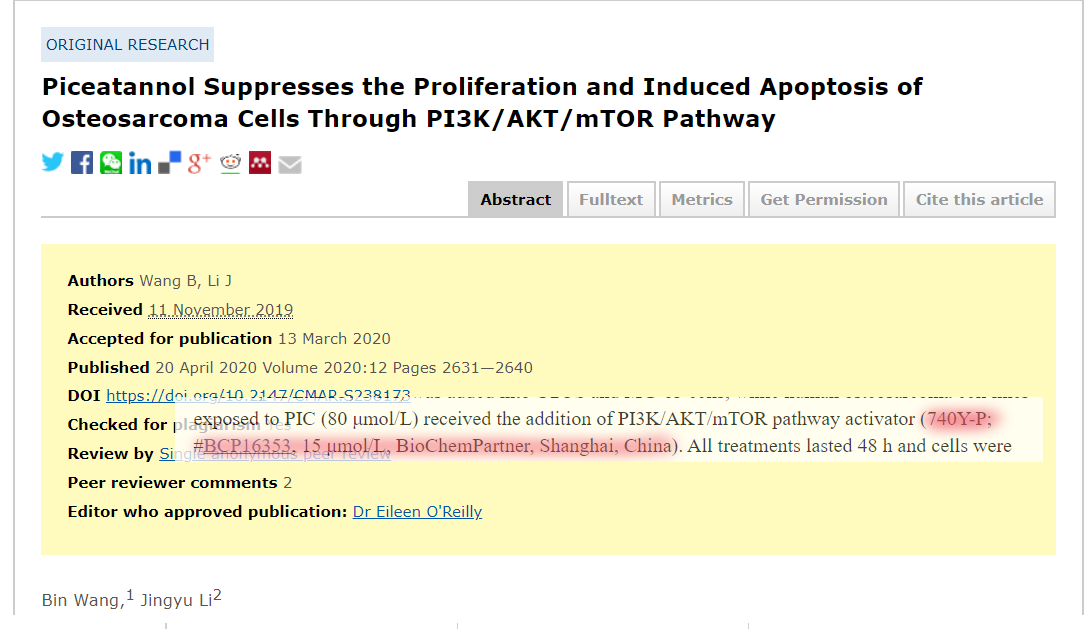Piceatannol Suppresses the Proliferation and Induced Apoptosis of Osteosarcoma Cells Through PI3K/AKT/mTOR Pathway

Background: Piceatannol (PIC) is confirmed to inhibit the proliferation of various tumors, but its role in osteosarcoma still remains unknown. This study investigated the function of PIC in osteosarcoma, aiming to provide a research basis for osteosarcoma therapy. Methods: Human osteosarcoma cells in this study were, respectively, treated with PIC at various concentrations (0, 20, 40, 80 μmol/L), PI3K/AKT/mTOR pathway inhibitor (LY294002), or pathway activator (740Y-P) plus PIC. Osteosarcoma cells were subcutaneously injected into nude mice to establish xenograft models, and PIC was intraperitoneally injected into models. The activity, proliferation, apoptosis and cell cycle of treated cells were determined by MTT test, colony formation assay or a flow cytometry. The expressions of PI3K/AKT/mTOR pathway-related proteins in cells and tumor tissues were measured by Western blot (WB) analysis. Results: PIC (40 and 80 μmol/L) and LY294002 availably suppressed activity and proliferation and induced apoptosis of osteosarcoma cells. PIC observably increased the number of cells retarded in G2 phase, but decreased the cell percentages in G1 and S phases. Conversely, 740Y-P reversed the effects of PIC on osteosarcoma cells, which promoted cell activity and proliferation and restrained apoptosis. In xenograft models, the volume and weight of the tumors treated by PIC were visibly alleviated than those untreated. The PI3K/AKT/mTOR pathway was prominently inhibited in PIC-treated osteosarcoma cells and tumor tissues. Conclusion: PIC suppresses the proliferation and induces apoptosis of osteosarcoma cells through regulating PI3K/AKT/mTOR pathway, which is expected to be the therapeutic of osteosarcoma.




